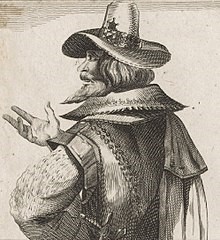On November 5th 1605, Guy Fawkes was arrested in the under croft of the Houses of Parliament in London. He was one of thirteen Catholic conspirators, many associated closely with Warwickshire, who all came together under the powerful leadership of one Robert Catesby.
When Queen Elizabeth I died in 1603, it was hoped that her successor, James I, would be more tolerant of the Catholics than she had been. However it turned out not to be and Catesby’s fight for more Catholic rights took him in a violent direction, culminating in a plot to blow up Parliament and perhaps even kill the King!
Warwickshire-born Catesby was a charismatic leader and not long before the Gunpowder Plot was hatched, had sold his Manor of Ladbroke to pay the excessive fines he had, for constantly getting into trouble with the Crown and Parliament. His wife was Catherine Leigh of Stoneleigh Abbey and he sold Ladbroke to his brother-in-law Robert Dudley, who was married to Catherine’s sister Alice. He was also cousin to the Throckmorton family of Coughton Court and therefore related to Clement Throckmorton who owned half the Manor of Southam at that time.
Guy Fawkes was a mercenary soldier who was fighting in Europe and was drawn into Catesby’s group because of his knowledge of gunpowder. Whilst the other conspirators had travelled to the Midlands, it was Fawkes who was caught in the early hours of the morning on November 5th in the cellars under the House of Lords with thirty-six barrels of gunpowder. Hence it is his name (rather than Robert Catesby’s) that is now associated with the gunpowder plot and ‘bonfire night’.
Robert Catesby was shot and killed in the siege that followed Fawkes’ capture, along with most of the other conspirators. The rest were imprisoned, tortured and then ‘hung, drawn and quartered’ in the most horrific way as a warning to others. Still today, the reigning monarch will only enter Parliament once a year at the ‘State Opening of Parliament’ and then only after the Yeoman of the Guard has searched the cellars of the Palace of Westminster.
To celebrate the failure of the gunpowder plot, bonfires were lit all over England that night in 1605. Over 400 years later, bonfires and fireworks are still lit on November 5th to commemorate the event. In the early 1600s at Southam, records in the churchwarden’s accounts show that the town followed the rest of the country, and as well as having a bonfire, the church bells were rung. For years afterwards, we know Southam rang St James’ Church bells each November 5th and for this the bell ringers were paid as much as 2 shillings each. This was more than the 1 shilling and 6 pence (1s 6d) usually paid on festival days, and also more than the 1 shilling and 10 pence (1s 10d) paid to each bell ringer for ringing when the Bishop visited Southam.
In normal (i.e. pre-Covid-19 pandemic) times Southam would have at least two large organised bonfire and firework displays for the townsfolk to enjoy. Whilst at Ladbroke, a bonfire and firework display would take place on the very land that Robert Catesby once owned in the middle of the village.
Photograph of an engraving of Robert Catesby by an unknown artist, courtesy of Wikimedia Commons. If you are interested in finding out more about local history, please see our website www.southamheritage.org or visit the museum on Thursday and Saturday mornings in Tithe Place, High Street from 10am to 12 noon. Telephone us on 01926 613503 email southamheritage@hotmail.com and find us on Facebook: Southam Heritage Collection.


Leave A Comment